
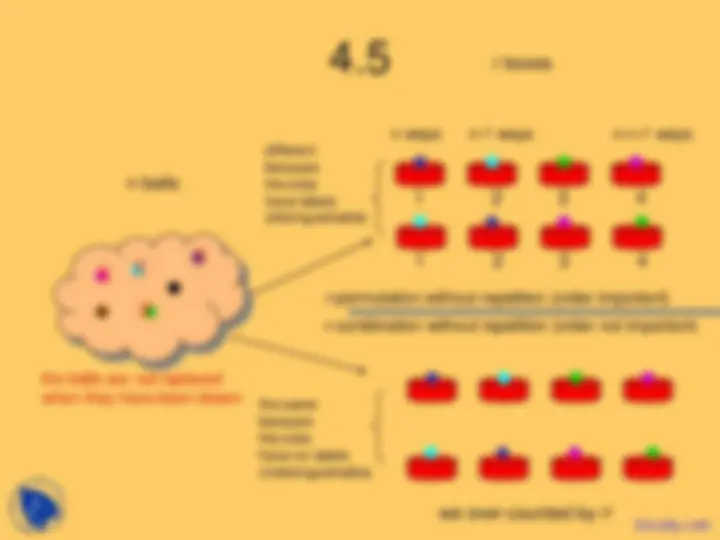
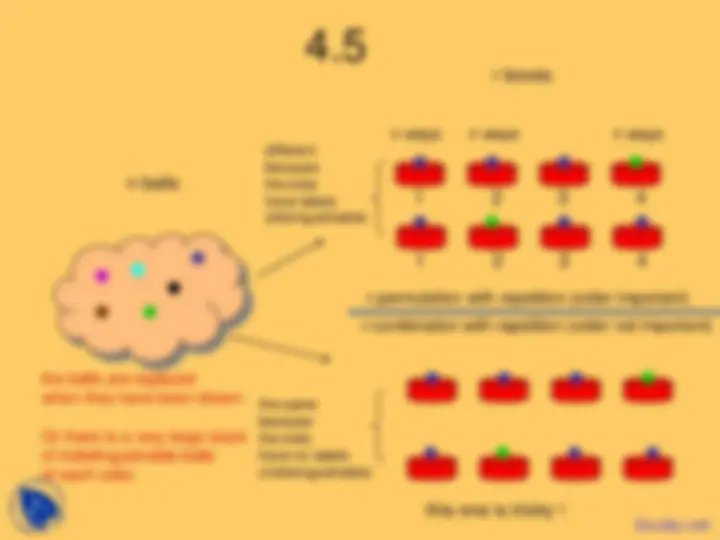
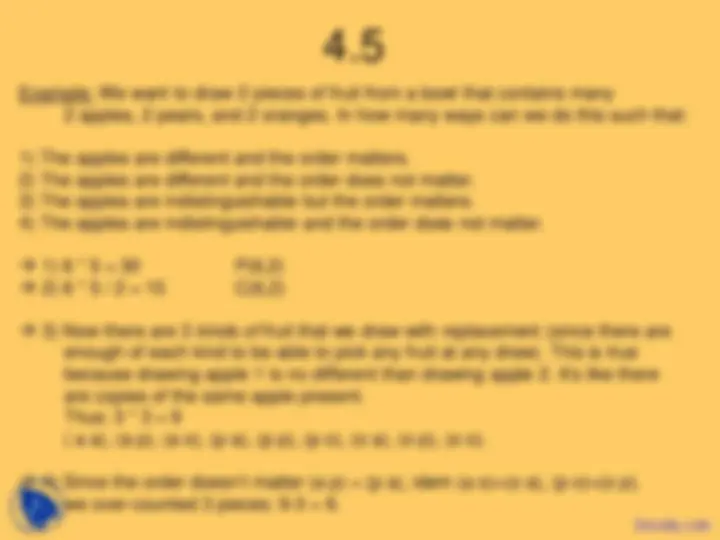
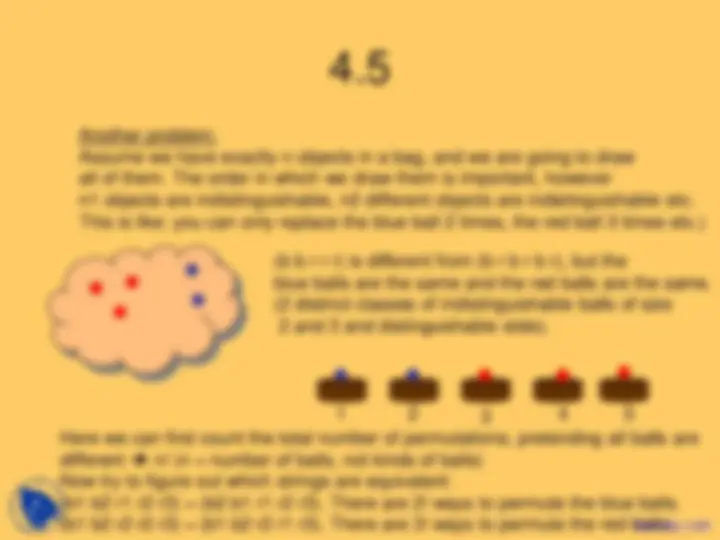
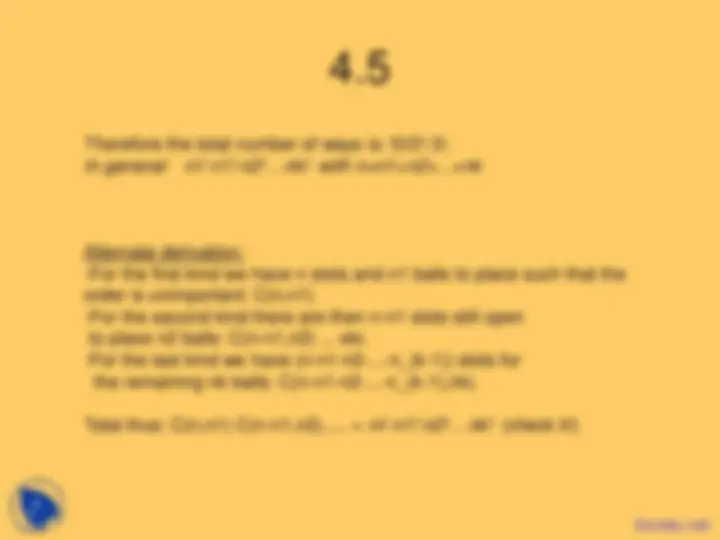
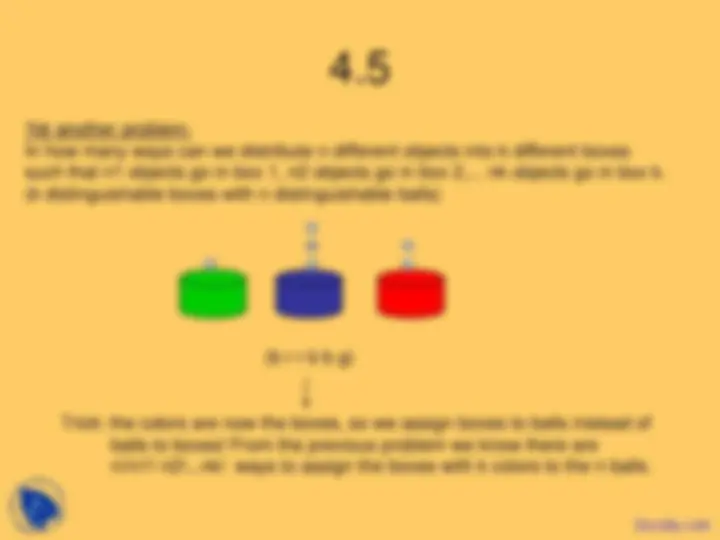
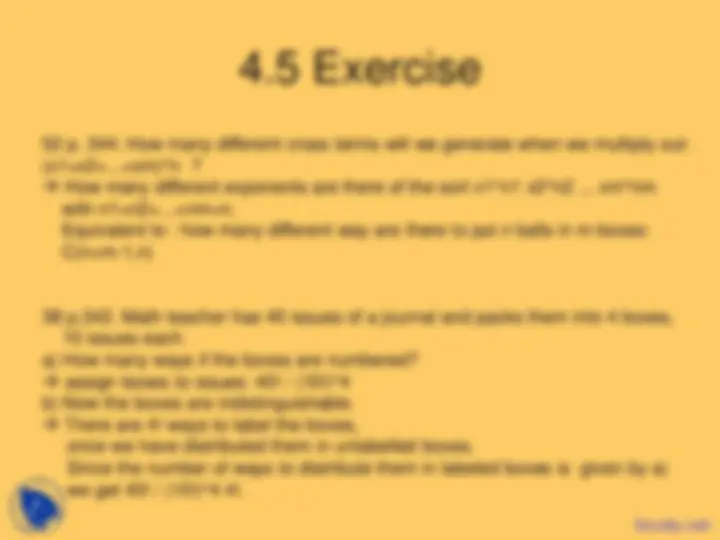


Study with the several resources on Docsity

Earn points by helping other students or get them with a premium plan


Prepare for your exams
Study with the several resources on Docsity

Earn points to download
Earn points by helping other students or get them with a premium plan
Community
Ask the community for help and clear up your study doubts
Discover the best universities in your country according to Docsity users
Free resources
Download our free guides on studying techniques, anxiety management strategies, and thesis advice from Docsity tutors
During the study of discrete mathematics, I found this course very informative and applicable.The main points in these lecture slides are:Generalized Permutations, Generalized Combinations, Counting Problems, Draw with Replacement, R-Combination with Repetition, Distinguishable Objects, Number of Permutations, Alternate Derivation, Nonnegative Integers
Typology: Slides
1 / 13

This page cannot be seen from the preview
Don't miss anything!








r-permutations: The number of ways in which we can draw r balls from a collection of n different balls, where the order is important: P(n,r) = n! / (n-r)! r-combinations: The number of ways in which we can draw r balls from a collection of n different balls, where we do not care about the ordering: C(n,r) = n! / r! (n-r)! Today: we study counting problems where repetitions are allowed, i.e. it is possible that the same ball is drawn multiple times.
n balls r boxes 1 2 3 4 n ways n ways n ways 1 2 3 4 r-permutation with repetition (order important) r-combination with repetition (order not important) the balls are replaced when they have been drawn. Or there is a very large stack of indistinguishable balls of each color. this one is tricky! different because the slots have labels (distinguishable) the same because the slots have no labels (indistinguishable)
Example: We want to draw 2 pieces of fruit from a bowl that contains many 2 apples, 2 pears, and 2 oranges. In how many ways can we do this such that:
Another problem: Assume we have exactly n objects in a bag, and we are going to draw all of them. The order in which we draw them is important, however n1 objects are indistinguishable, n2 different objects are indistinguishable etc. This is like: you can only replace the blue ball 2 times, the red ball 3 times etc.) (b b r r r) is different from (b r b r b r), but the blue balls are the same and the red balls are the same. (2 distinct classes of indistinguishable balls of size 2 and 3 and distinguishable slots). Here we can first count the total number of permutations, pretending all balls are different n! (n = number of balls, not kinds of balls) Now try to figure out which strings are equivalent: (b1 b2 r1 r2 r3) = (b2 b1 r1 r2 r3). There are 2! ways to permute the blue balls. (b1 b2 r2 r2 r3) = (b1 b2 r2 r1 r3). There are 3! ways to permute the red balls.
Docsity.com
Yet another problem: In how many ways can we distribute n different objects into k different boxes such that n1 objects go in box 1, n2 objects go in box 2,... nk objects go in box k. (k distinguishable boxes with n distinguishable balls) 4 1 (^6 ) 2 (b r r b b g) Trick: the colors are now the boxes, so we assign boxes to balls instead of balls to boxes! From the previous problem we know there are n!/n1! n2!...nk! ways to assign the boxes with k colors to the n balls.
Examples:
52 p. 344: How many different cross terms will we generate when we multiply out: (x1+x2+...+xm)^n? How many different exponents are there of the sort x1^n1 x2^n2 ... xm^nm with n1+n2+...+nm=n. Equivalent to : how many different way are there to put n balls in m boxes: C(n+m-1,n) 38 p.342. Math teacher has 40 issues of a journal and packs them into 4 boxes, 10 issues each. a) How many ways if the boxes are numbered? assign boxes to issues: 40! / (10!)^ b) Now the boxes are indistinguishable. There are 4! ways to label the boxes, once we have distributed them in unlabelled boxes. Since the number of ways to distribute them in labeled boxes is given by a) we get 40! / (10!)^4 4!.